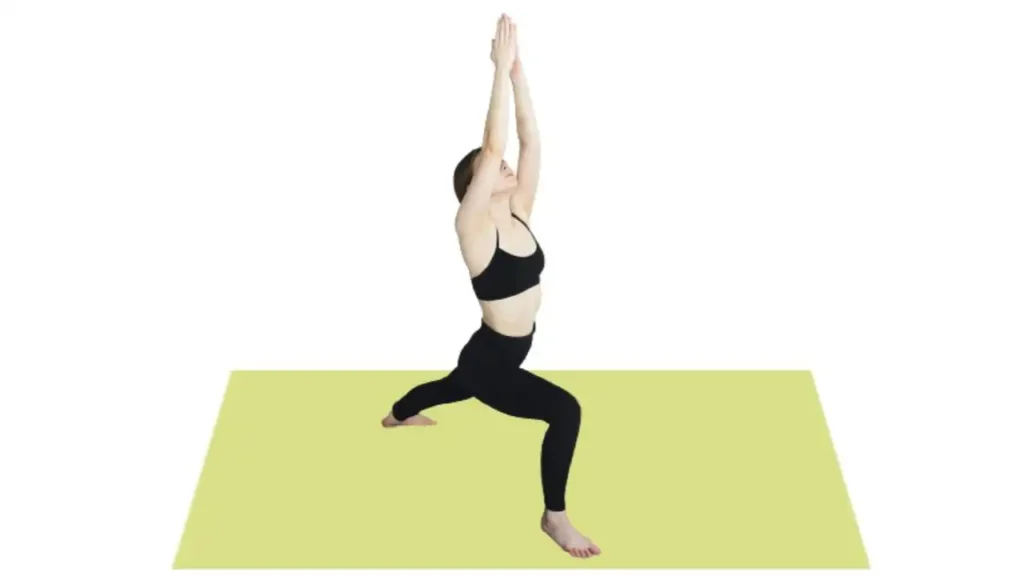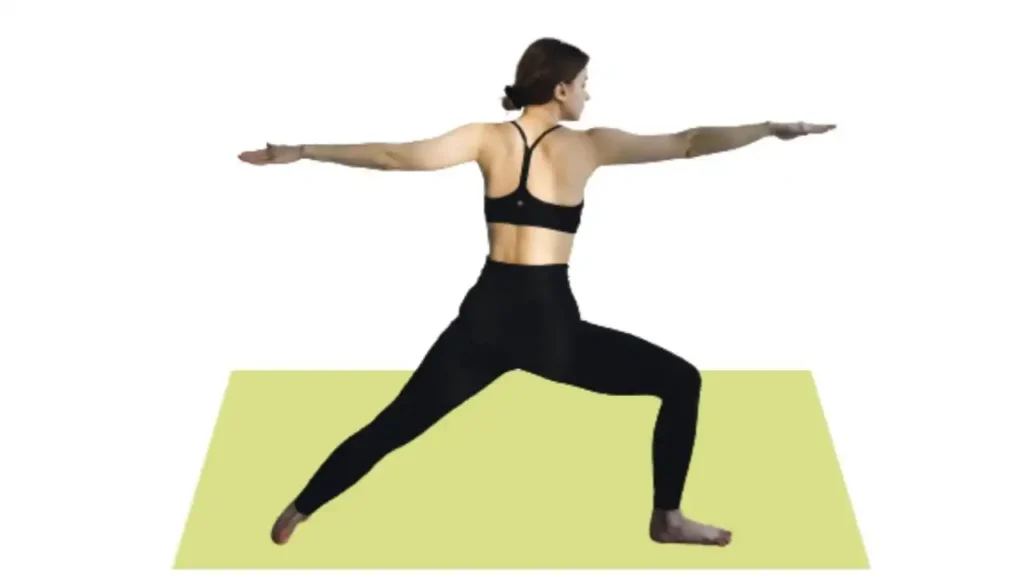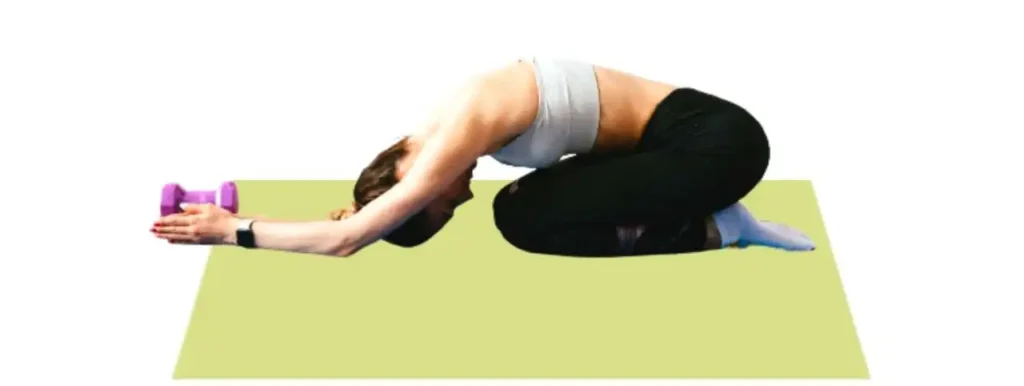Begin in Mountain Pose. Shift weight onto one foot and lift the opposite foot to place the sole against the inner thigh or calf of the standing leg. Press the foot and thigh together while keeping the hips squared. Bring hands to heart center or extend them overhead like branches. Hold for several breaths, focusing on balance and stability.
3. Warrior I (Virabhadrasana I):

From Mountain Pose, step one foot back into a lunge position, with the front knee bent and stacked over the ankle. Square the hips forward and reach the arms overhead, palms facing each other. Keep the back leg strong and straight. Hold for several breaths, feeling rooted through the feet and stable in the pose.
4. Warrior II (Virabhadrasana II):

From Warrior I, open the hips and arms out to the sides, with the front foot pointing forward and the back foot parallel to the back of the mat. Bend the front knee to a 90-degree angle, keeping the knee stacked over the ankle. Extend the arms out to the sides, gaze over the front fingertips, and hold for several breaths, feeling grounded and strong.
5. Child’s Pose (Balasana):

Begin on hands and knees, then sit back onto the heels with knees wide apart. Lower the chest toward the thighs and extend the arms forward, resting the forehead on the mat. Stay here for several breaths, focusing on grounding through the forehead, palms, and shins.
6. Chair Pose (Utkatasana):

Begin in Mountain Pose. On an inhale, bend the knees and lower the hips as if sitting back into an imaginary chair. Keep the weight in the heels and the spine long. Reach the arms overhead or keep them at heart center. Hold for several breaths, feeling grounded and strong through the legs.
7. Malasana (Garland Pose):

Start in a standing position, then squat down with feet wider than hip-width apart and toes turned slightly out. Bring the palms together at heart center and use the elbows to press the knees open. Keep the spine long and chest lifted. Hold for several breaths, feeling grounded and connected to the earth.
8. Uttanasana (Standing Forward Bend):

From Mountain Pose, exhale and hinge at the hips to fold forward, reaching hands toward the floor or grasping opposite elbows. Keep the spine long and relax the head and neck. Hold for several breaths, feeling a gentle stretch in the hamstrings and grounding through the feet.
How to balance root chakra with meditation ?
Follow these steps for how to meditate on root chakra.
- Go to a quiet and comfortable space and either sit or lie down.
- Shut your eyes and inhale deeply a few times to ease both your body and mind.
- Imagine a vibrant red light at the base of your spine, that’s where the root chakra is located.
- With each inhale, imagine breathing in positive energy and vitality, filling the root chakra with warmth and stability.
- As you exhale, release any tension, fear, or negativity stored in the root chakra.
- Focus on feeling grounded and connected to the earth beneath you.
- Repeat affirmations related to safety, security, and stability, such as “I am safe,” “I am grounded,” or “I trust in the process of life.”
- Continue this meditation practice for several minutes, allowing yourself to fully immerse in the healing energy of the root chakra.
- When you’re ready, slowly open your eyes and gently return to the present moment.
Regular practice of this root chakra meditation can help restore balance, stability, and a sense of security in your life.
How to heal root chakra with crystals
Here’s the revised list with the most effective crystals listed from top to bottom along with their descriptions:
1. Red Jasper
This grounding stone is often used to balance and stabilize the root chakra. Hold a piece of red jasper in your hand during meditation or place it near the base of your spine while lying down.
2. Black Tourmaline
Known for its protective properties, black tourmaline can help dispel negative energy and promote feelings of safety and security. Carry a piece of black tourmaline in your pocket or wear it as jewelry to keep the root chakra grounded and protected.
3. Bloodstone
Associated with strength, courage, and vitality, bloodstone is used during meditation by placing it on the root chakra area or holding it in your hand to promote healing and balance.
4. Hematite
A powerful grounding stone, hematite can anchor the root chakra to the earth. Wear hematite jewelry or hold a piece of hematite in your hand during meditation to promote feelings of stability and security.
5. Ruby
Ruby is a strong gem linked with feelings like passion, energy, and bravery. It can help activate and energize the root chakra, promoting a sense of strength, stability, and groundedness. Use ruby during meditation by placing it on the root chakra area or carrying it with you throughout the day.
6. Garnet
Known for its grounding and protective qualities, garnet can help balance and stabilize the root chakra. Wear garnet jewelry or place it on the root chakra area during meditation to support healing and balance.
7. Obsidian
A powerful protective stone, obsidian can absorb and transmute negative energy. It is beneficial for grounding and stabilizing the root chakra, promoting feelings of security, strength, and empowerment.
8. Smoky Quartz
Smoky quartz is a grounding stone that can anchor the root chakra to the earth. It transmutes negative energy and promotes feelings of stability, security, and protection. Use smoky quartz during meditation by placing it on the root chakra area or carrying it with you throughout the day.
9. Lodestone
A naturally magnetic stone, lodestone can help align and balance the root chakra. It is known for its grounding and stabilizing qualities, promoting feelings of security, resilience, and inner strength. Use lodestone during meditation by placing it on the root chakra area or carrying it with you to support healing and balance.
Remember to cleanse and charge these crystals regularly to keep their energy clear and potent. Discover how to open a blocked root chakra by experimenting with different crystals. Find the ones that resonate best with you and incorporate them into your daily routine to support healing and balance.
How to open a blocked root chakra with Essential Oils
To activate the root chakra apply essential oils such as myrrh, vetiver, sandalwood, patchouli, or spikenard.hese oils can help to stimulate and balance the root chakra.
- Mix a few drops of the essential oil with a carrier oil, such as coconut oil, jojoba oil, or sweet almond oil ang rub your palm to energise . A general rule of thumb is to use 1-2 drops of essential oil per teaspoon of carrier oil.
- Begin by placing the oil mixture in your palms and rubbing them together. The friction will release the scent and energy of the oils. Open your palms to release the fragrance, then deeply inhale the scent.
- Now apply the essential oil to specific areas associated with the root chakra, such as the soles of your feet, the base of your spine (lower back), or your abdomen. You can also massage the oil blend into these areas in a clockwise motion to stimulate the energy flow.
- Before applying the essential oil, take a moment to set your intention for activating the root chakra. You can use affirmations or visualizations to focus your energy and intention on balancing and grounding the root chakra.
By following these steps and incorporating essential oils into your practice, you can help to activate and balance the root chakra, promoting feelings of security, stability, and groundedness.
